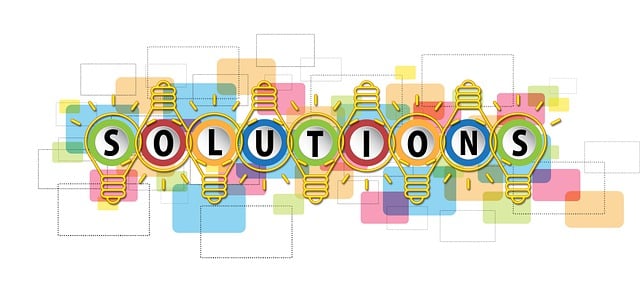Energy-efficient lighting in academic restrooms reduces costs, emissions, and enhances health, aligning with sustainability initiatives. LED technology, motion sensors, and high CRI ratings create natural, comfortable spaces. Sustainable practices teach eco-awareness, optimize water use, cater to all users, and lower maintenance expenses, fostering a positive institutional image. Implementing these solutions benefits students, staff, budgets, and the environment in sustainable restroom solutions for schools and universities.
“Transforming academic settings with sustainable restroom solutions is not just about aesthetics; it’s a strategic move towards energy conservation. This article explores how energy-efficient lighting, particularly LED technology, can revolutionize restroom environments. We delve into the significant impact of lighting on these spaces, its environmental and financial benefits, and provide expert guidance on choosing the ideal LED systems for schools and universities. Discover how integrated design and long-term savings contribute to a greener future.”
- Understanding the Impact of Lighting on Restrooms
- Benefits of Energy-Efficient Lighting Systems
- Choosing the Right LED Technology for Schools
- Integration and Design Considerations for Academic Spaces
- Long-Term Savings: A Sustainable Future for Universities
Understanding the Impact of Lighting on Restrooms

Restroom lighting often goes unnoticed, yet it significantly impacts users’ experiences and institutional sustainability. In academic settings, where restrooms are used frequently, efficient lighting can contribute to broader sustainable restroom solutions for schools and universities. Energy-efficient lights reduce electricity consumption, cutting down on operating costs and carbon emissions. Moreover, optimizing indoor air quality through proper lighting minimizes the risk of illness, enhancing user satisfaction.
By adopting durable and eco-friendly lighting options, institutions not only promote environmental responsibility but also demonstrate their commitment to holistic facilities management. This includes considerations like waste management—reducing energy usage aligns with efforts to minimize waste and optimize recycling—and water efficiency. For instance, LED lights are highly efficient, lasting longer than traditional bulbs, thereby reducing the frequency of replacements and further lowering environmental impact. Incorporating such sustainable practices can create a positive image of the institution, reflecting its values in every aspect, from its buildings to its operations, including find us at composting in institutions and using sustainable materials.
Benefits of Energy-Efficient Lighting Systems

Implementing energy-efficient lighting systems in restrooms across academic settings offers a multitude of benefits, contributing to both cost savings and sustainable practices. These advanced solutions are designed to reduce energy consumption significantly, minimizing the environmental impact and lowering utility bills for schools and universities. By adopting such innovations, institutions can lead by example, teaching students about eco-friendly initiatives and fostering a culture of sustainability.
Moreover, efficient lighting integrates seamlessly with broader sustainable restroom strategies, including composting programs in institutions, recycling initiatives, and the use of sustainable materials. This holistic approach not only reduces waste but also promotes a healthier school landscape management. For instance, giving us a call at Restroom Furniture can help educational facilities navigate these changes, ensuring they receive expert guidance on selecting energy-efficient fixtures that complement their unique needs and contribute to their broader sustainability goals.
Choosing the Right LED Technology for Schools

Choosing the right LED technology for schools is an essential step in implementing sustainable restroom solutions for schools and universities. Look for lights that offer high color rendering index (CRI) ratings, ensuring natural and flattering lighting for students and faculty alike. This feature not only enhances visual comfort but also supports better concentration and productivity during study hours.
LEDs with motion sensors are ideal for restrooms as they automatically adjust lighting levels based on occupancy, reducing energy consumption and waste. These smart features align perfectly with green initiatives, making your school a leader in water and energy conservation. Conducting surveys among faculty and students can help identify specific lighting needs and preferences, ensuring the chosen technology meets all user requirements. Visit us at LEED certified any time to explore our range of eco-friendly solutions for sustainable restroom management.
Integration and Design Considerations for Academic Spaces

When designing sustainable restroom solutions for schools and universities, careful integration is key to creating functional and inviting spaces. Restroom technology plays a vital role in promoting sustainable habits among students, faculty, and staff. Integrating innovative features such as low-flow fixtures, automated sensors, and energy-efficient lighting can significantly optimize indoor environmental conditions while reducing water and energy consumption.
Beyond functionality and sustainability, accessible design is essential. Ensure that the chosen restroom technology facilitates ease of use for all individuals, including those with disabilities. By combining sustainable hydration restroom technology with thoughtful design considerations, academic institutions can create spaces that not only support ecological awareness but also enhance overall user experience. Give us a call at Green Cleaning to explore how these strategies can be tailored to your specific needs.
Long-Term Savings: A Sustainable Future for Universities

Implementing sustainable restroom solutions for schools and universities goes beyond environmental responsibility; it’s a strategic investment in long-term savings. Energy-efficient lighting, a key component of any eco-conscious campus, significantly reduces operational costs over time. Traditional lighting systems often contribute to substantial utility bills within educational institutions, making the switch to efficient alternatives not just beneficial for the planet but also for school and university budgets.
By adopting energy-efficient practices through sustainable architecture for schools, campuses can enjoy lower maintenance expenses as well. Modern, long-lasting fixtures are designed to withstand demanding school landscape management and janitorial services schedules. This shift towards eco-friendly practices can also attract students and faculty who prioritize environmental stewardship, fostering a culture of sustainability within the academic community. To explore how your institution can make this transition, give us a call at Greywater.
Energy-efficient lighting is not just an environmental priority but also a sensible investment for academic institutions. By adopting sustainable restroom solutions like LED technology, schools and universities can reduce energy consumption, lower operating costs, and contribute to a greener future. The long-term benefits of these systems extend beyond financial savings, fostering an environment that values sustainability and sets an example for the next generation.






